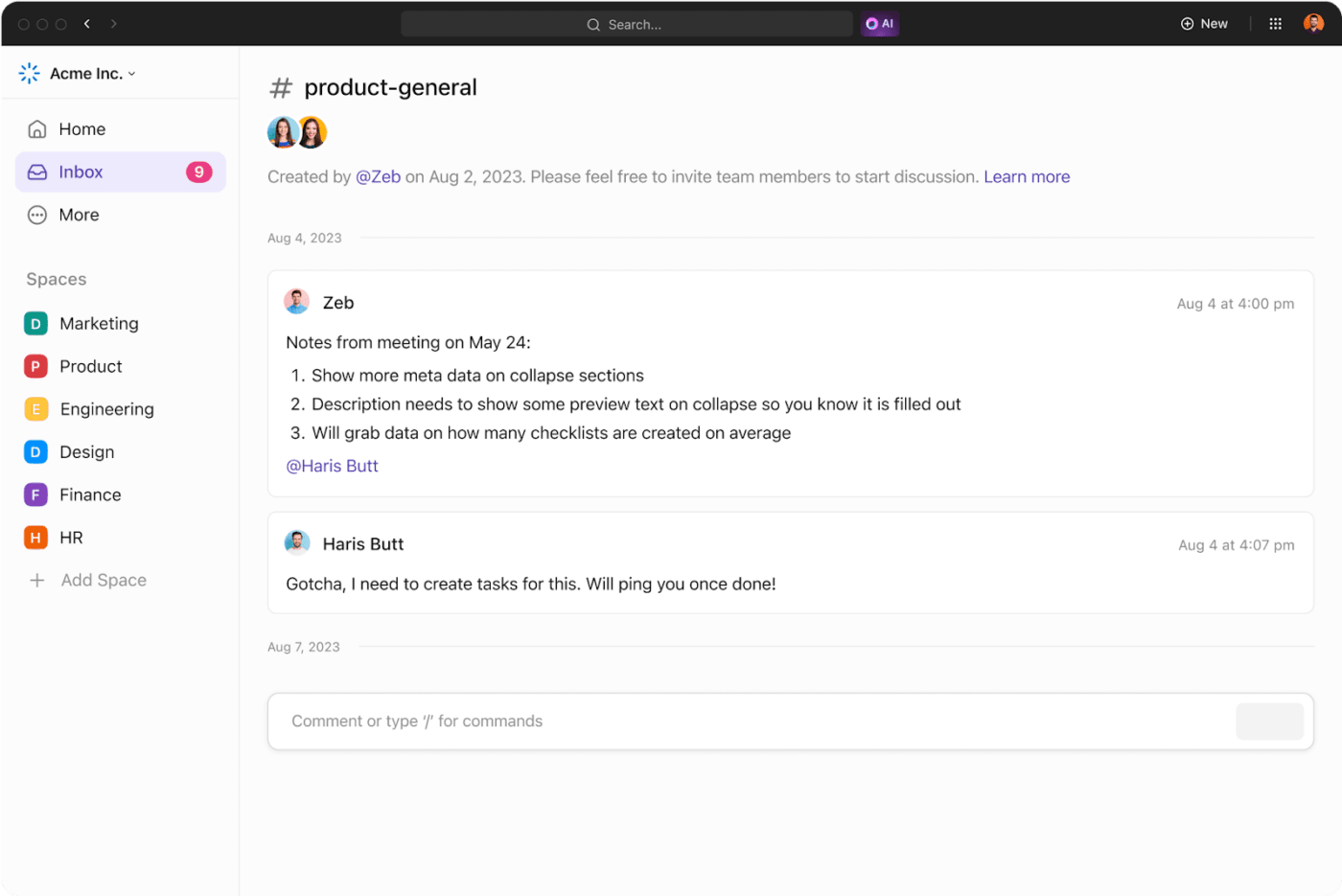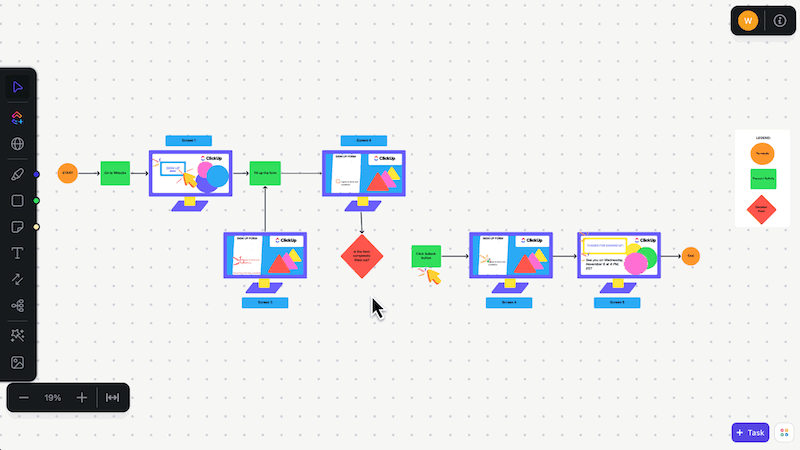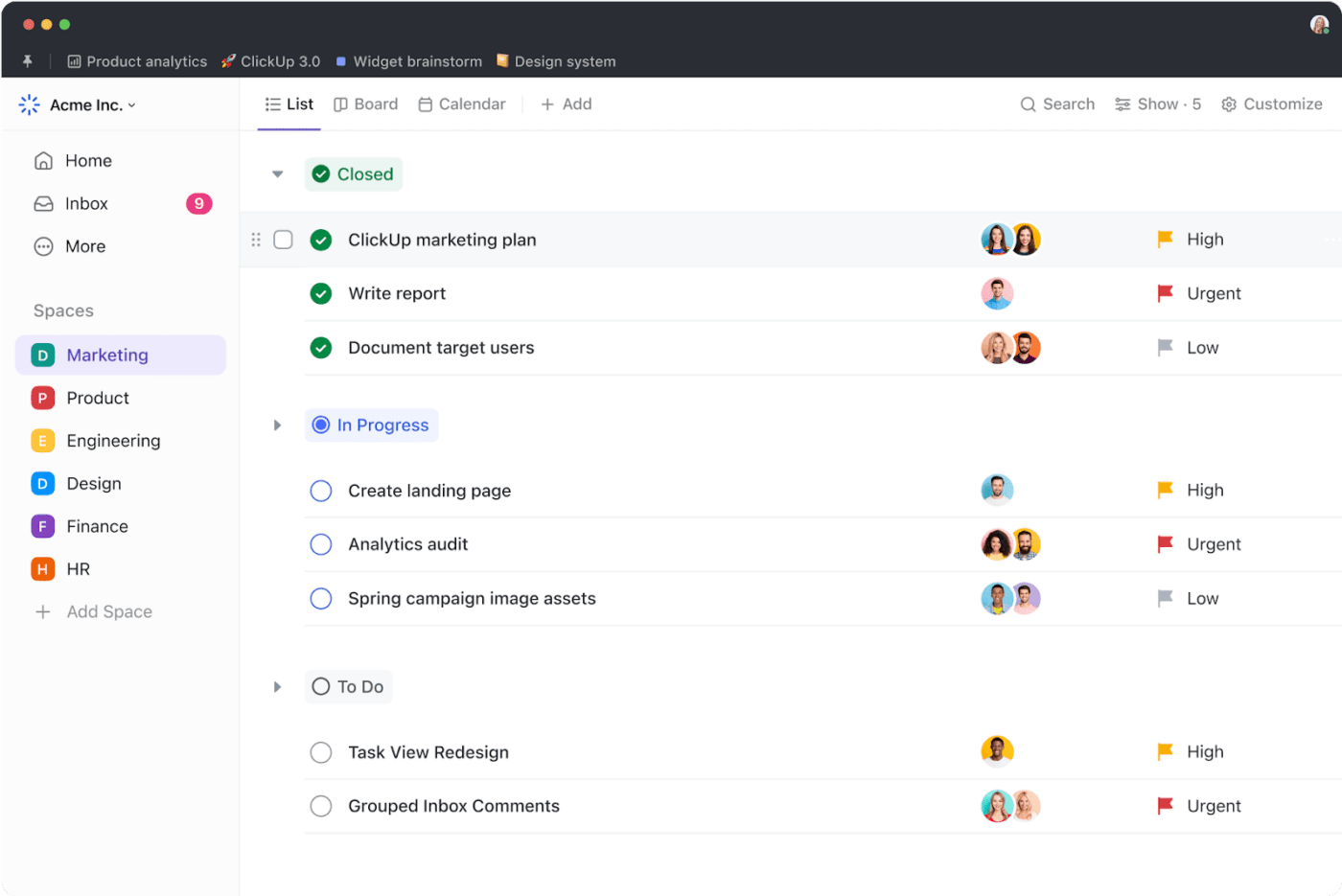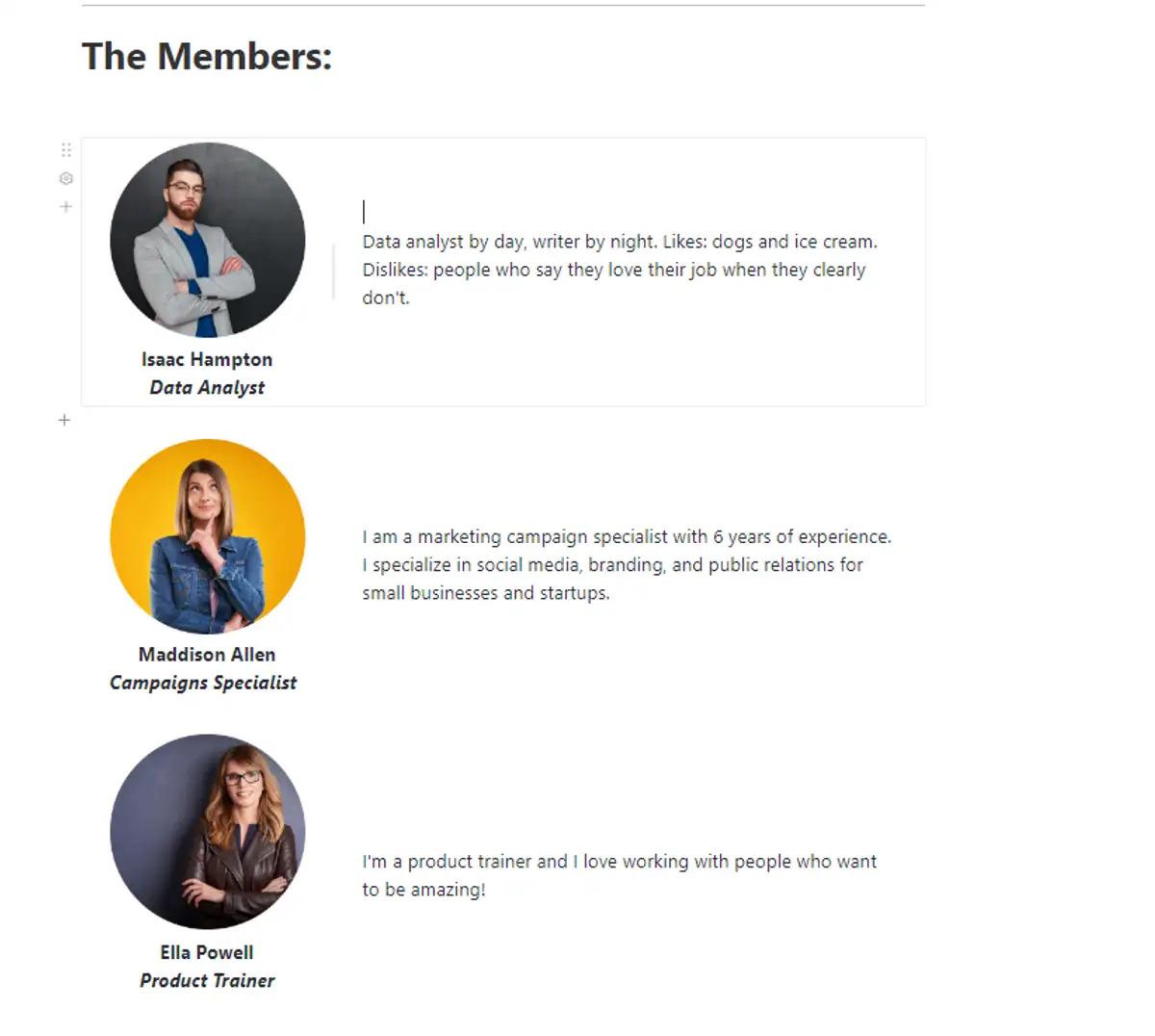Melanie and John are both introverts, but their outlook on life is vastly different.
Melanie approaches life with a practical mind—she doesn’t get swayed by emotions when making important decisions. She relies on real-life experiences and acts based on logic.
On the other hand, John believes in the future. His decisions are emotionally charged rather than grounded in reality.
What makes them different? The answer lies in their Myers–Myers-Briggs type Indicator (MBTI)—Melanie is an ISFP (Introverted, Sensing, Feeling, Perceiving), while John is an INFP (Introverted, Intuitive, Feeling, Perceiving) based on the 16 different personality types according to the framework.
Before discussing ISFP vs. INFP, let’s understand why this concept is relevant to modern workplaces and society.
- Meyers Briggs Personality Test: A Quick Overview
- ISFP vs. INFP Personality Types at a Glance
- What Is an ISFP Personality Type?
- What Is an INFP Personality Type?
- Key Differences and Similarities Between an ISFP and an INFP
- ISFP and INFP Collaboration Strategies
- Understanding and Embracing Differences
Meyers Briggs Personality Test: A Quick Overview
The Meyers-Briggs Type Indicator (MBTI) is a self-reporting questionnaire that helps you learn more about yourself. From how you perceive information, make decisions, and collaborate with others, this test offers a peek into the traits that make you who you are.
This personality test helps with the following:
- Choosing a profession that aligns with an individual’s personality type
- Learning the strengths and weaknesses of the different personality types
- Creating a work environment where all personalities can thrive
- Assigning work according to personality types to make the best use of one’s potential
- Understanding oneself and leading a fulfilling and content life
Whether you’re looking to know yourself better or you’re an HR manager interested in gaining insights about your workforce, the MBTI assessment will be of great value to you.
The Meyers-Briggs methodology analyzes personality along four scales:
- Extraversion (E) vs. Introversion (I): This scale measures where individuals get their energy from. Extraverts tend to be outgoing and draw energy from social interactions, while introverts are more reserved and gain energy from solitude
- Sensing (S) vs. Intuition (N): This scale refers to how people perceive information. Sensors rely on concrete data and focus on the present, while Intuitives prefer to interpret patterns and possibilities, often focusing on the future
- Thinking (T) vs. Feeling (F): How individuals make decisions is based on this scale. Thinkers prioritize logic and objective analysis, while Feelers consider emotions and values when making choices
- Judging (J) vs. Perceiving (P): This scale relates to how individuals approach the outside world. Judgers prefer structure and organization, while Perceivers are more flexible and spontaneous
These four scales combine to form 16 possible personality types, two of which are ISFP and INFP.
ISFP vs. INFP Personality Types at a Glance
Here’s a brief overview of ISFP vs. INFP personality types.
Differences
| ISFP | INFP |
| Grounded in the moment | Future-oriented |
| Express themselves through actions (e.g., painting) | Express themselves through words (e.g., poetry) |
| Fun-loving | Anxious |
| Practical | Dreamer |
| Gels well with new people | Doesn’t gel well with new people |
Similarities
- Enjoy spending time alone
- Sensitive
- Empathetic
- Independent
We’ll go into the details shortly, but before that, let’s understand the individual personality types.
What Is an ISFP Personality Type?
In the Meyers-Briggs personality type framework, ISFP stands for Intuitive, Sensing, Feeling, and Perceiving. ISFPs (also known as Adventurers) are creative, down-to-earth, empathetic, independent, and curious. They have strong artistic sensibilities and an innate attraction towards exploring new things.
Key characteristics of an ISFP
These are some characteristics an ISFP embodies:
- ISFPs are introverts—they enjoy their own company and prefer to spend time alone to reconnect with themselves
- They trust their senses or real-life observations more than their intuition
- Emotions are more important to them than logic
- They are open-minded and agile—being overly organized or rigid is not their cup of tea
ISFP strengths and weaknesses
Strengths
- ISFPs believe in the ‘live and let live’ philosophy, which makes them optimistic, light-hearted, and fun to be around
- They are sensitive and understand the feelings of others
- They are highly imaginative
- They love researching and exploring the unknown
- They possess excellent problem-solving abilities
- Their individuality sets them apart
Weaknesses
- ISFPs find it difficult to commit to something for long-term periods
- They struggle to create a plan for themselves or follow one
- They often derive their self-worth from accomplishments, which makes them highly competitive
- Their preference for autonomy makes it difficult to adjust in rigid, structured workspaces or academic spheres
ISFPs at work
At the workplace, ISFPs are pragmatic, cooperative, and independent, but they are also open to collaboration when there’s a like-minded team by their side. Let’s understand how this personality type performs as leaders and team members, what their work ethic looks like, and which management styles they adopt.
ISFP in leadership
ISFPs generally tend to avoid leadership roles but do well when leading a small group of cooperative team members.
As leaders, they set realistic goals rather than overarching ones, going the extra mile to help the team members. Their empathy makes them great listeners—they can understand the issues the team members are facing. Their leadership style is more about leading quietly by example than exercising authority.
ISFP leaders are adept at understanding project requirements and allocating resources accordingly. They also work well with constantly shifting project requirements, as they are quick to adapt to changes.
ISFP as employees
ISFPs love jobs that align with their values and purpose. At the workplace, they enjoy activities or tasks attached to tangible results. They prefer a polite and cooperative physical environment where they can work independently. Their aesthetic sensibilities often require the workplace (or at least their cabin/work desk) to be visually appealing.
This personality type likes to work independently, but it also thrives when it is part of a team. As team members, ISFPs tend to be helpful, flexible, open to feedback, innovative, and loyal. Their innate introversion makes them averse to public speaking or roles that involve leading a large team.
Jobs with stressful deadlines or rigid structures can quickly wear them out, and so can a work culture with many conflicts.
ISFP career paths
Here are some career paths you can explore as an ISFP:
- Artist
- Fashion designer
- Graphic designer
- Interior designer
- Musician
- Chef
- Jeweler
- Florist
- Social worker
- Teacher
- Nurse
- Retail manager
What Is an INFP Personality Type?
In the MBTI assessment, INFP stands for Introversion, Intuition, Feeling, and Perceiving. INFPs (also known as Mediators or Idealists) feel recharged when they spend time in solitude, envision possibilities, and live a life in tune with their values and principles. They are gentle, sympathetic, and spontaneous and care about their personal growth and that of others.
Key characteristics of an INFP
Here are some notable characteristics of an INFP:
- INFPs follow their hearts and emotions, which makes them sensitive
- They are dreamers who always look at the bigger picture
- They come across as shy and reserved
- They aspire to leave a positive impact on the world
INFP strengths and weaknesses
Strengths
- INFPs enjoy their own company but also form deep, meaningful relationships with a close-knit group of friends
- They are highly passionate—they put their heart and soul into every work they do
- They uplift others with empathy and generosity
- They have an open mind and are non-judgmental of others’ opinions, choices, or decisions
- They approach problems from unique perspectives
- They resolve conflict and establish harmony
Weaknesses
- INFPs struggle to open up about their feelings
- They feel drained after socializing
- Their perfectionist nature makes them overly self-critical
- People-pleasing tendencies make it difficult for them to prioritize their own needs
INFPs at work
INFPs worry less about ticking off their task list or improving revenue; they aim to help others in the workplace. They like positive feedback, have lofty opinions about themselves, and enjoy having the freedom to unleash their creative side.
INFP in leadership
INFP leaders lead by intuition. They set idealistic goals with the bigger picture in mind. Their optimistic outlook toward future possibilities encourages team members to push harder and give their best to attain the objectives.
INFPs can quickly connect the dots between actions and outcomes, helping them outline the necessary steps to complete a task, have a proper project plan, and delegate work.
As leaders or managers, they are committed to the growth and development of themselves, other team members, and the organization.
INFPs as employees
INFP employees thrive in small teams where they can have meaningful interactions. Big teams and back-to-back meetings can drain their energy, so they function better when there’s a good balance between interactive work and independent work.
They are passionate by nature, and when they are part of a project they feel strongly about, they put their best efforts into it. Despite being introverts, they can build easy-going professional relationships with team members.
Their creativity and inclination toward innovation make them great at brainstorming, solving complex problems, and adding a creative touch to mundane tasks. Their empathy and understanding make it easy to resolve conflicts.
INFP career paths
Here are some career paths you can explore as an INFP:
- Multimedia artist
- Graphic designer
- Writer
- Film editor
- PR manager
- HR Specialist
- Mental health counselor
- Psychologist
- Teacher/Professor
- Nutritionist
- Curator
- Librarian
Rabbit hole: Explore INFP books to learn more about this personality type and take a journey toward self-discovery.
Key Differences and Similarities Between an ISFP and an INFP
It’s easy to get confused between ISFP and INFP, considering how similar some of their character traits are, but the two also share some distinct differences.
Key differences
ISFP and INFP have much in common thanks to the same dominant function (Introverted Feeling or Fi) and the same inferior function (Extraverted Thinking or Te). However, the auxiliary and tertiary functions are different. Take a look at this chart:
| Cognitive functions | ISFP | INFP |
| Dominant function | Introverted Feeling (Fi) | Introverted Feeling (Fi) |
| Auxiliary function | Extraverted Sensing (Se) | Extraverted Intuition (Ne) |
| Tertiary function | Introverted Intuition (Ni) | Introverted Sensing (Si) |
| Inferior function | Extraverted Thinking (Te) | Extraverted Thinking (Te) |
Now, let’s dig deeper into how the difference in functions manifests in the two personality types:
1. Outlook on life
ISFPs are pragmatic—they feel the world through their senses and make decisions based on personal experience. They remain grounded in the present moment, taking things as they come.
In contrast, INFPs focus on abstract concepts and possibilities rather than lived experiences. They are dreamers and visionaries who keep their eyes glued to future possibilities.
2. Ways of expression
Artists at heart, ISFPs express themselves through actions, such as painting, artwork, and music.
In contrast, INFPs enjoy intellectual pursuits through words, such as writing essays, novels, or poetry.
3. Decision making
ISFPs rely on their personal values and immediate sensory experiences while making decisions.
In contrast, INFPs consider their values and principles alongside their long-term vision before making important life decisions.
3. Temperament
ISFPs are fun-loving and spontaneous—the happy-go-lucky type. They know how to have a good time.
In contrast, INFPs struggle with the complexity of their thoughts. They find it difficult to relax and often feel anxious about the future.
4. Relationships
ISFPs enjoy privacy and quiet time alone but also easily get acquainted with new people.
In contrast, INFPs fear rejection and struggle to make new connections.
5. Style of working
ISFPs can be good at juggling multiple tasks in one go.
In contrast, INFPs prefer to complete the task at hand before moving on to the next.
6. Outlook on materialistic possessions
As Se-Ni types, ISFPs often prefer the nicer things in life, such as status and material possessions.
In contrast, INFPs are Ni-Se types who are satisfied with the necessities and are inclined toward material minimalism.
Key similarities
The shared preference for introversion, feeling, and perceiving leads to a lot of similarities between ISFPs and INFPs:
1. Introverted feeling (Fi)
Both types lead with Fi, making them deeply rooted in their values, emotions, and beliefs. They prioritize authenticity over being influenced by the outer world.
2. Perceiving preference
Both ISFPs and INFPs have a perceiving preference, which makes them adaptable. They’re open to constructive feedback and changes, prefer minimal planning, and figure things out on the go.
3. Emotional sensitivity
Both types are deeply empathetic and compassionate toward other people’s feelings. They put themselves in others’ shoes to understand their emotional state and connect with their close friends on a deeper level.
4. Creative expression
ISFPs and INFPs tend to indulge in creative outlets such as art, music, writing, or other forms of self-expression. They enjoy using their creativity to be introspective and communicate their emotions.
5. Need for autonomy
Both types tend to be flexible and open-minded, valuing freedom and autonomy. They don’t like rigid structures or rules that may confine their individuality.
ISFP and INFP Collaboration Strategies
A happy and productive work culture is one where the different personalities feel comfortable and get the right opportunities to showcase their potential. Here are some key strategies leaders and people managers can use to master collaborative work management:
1. Create a work environment suitable for different personality types
Strive to create a balance between autonomy and collaboration to cater to the varied work styles of different personality types. Too much autonomy can make extroverted employees feel lonely and unsupported at work, while excessive stress on collaboration can leave introverts feeling drained of energy.
A work management and online collaboration tool like ClickUp can help you balance the two aspects, boost efficiency, and cultivate a productive mindset among teams.
ClickUp offers multiple ways of communication, empowering employees to choose a method that works best for them or switch between channels if they want. Let’s see how:
- Interact with team members, ask questions, share resources, or follow up in real time with ClickUp’s Chat View. Use the @mention feature in Task comments and manage team communications under one roof

- Bring remote teams together and help them collaborate on projects with ClickUp Whiteboards. Brainstorm, add notes, create workflows, and add context to your ideas by linking trackable Tasks or external resources

- Organize team communication with ClickUp Clips. Use this screen recording feature to send voice or video notes quickly and skip unnecessary meetings

- Use ClickUp’s tailored communication plan templates to get the message across in a way that works for everyone.
For instance, you can communicate the right information to the right people with ClickUp’s Communications Plan Whiteboard Template.
Use the preset Whiteboard view that’s split into neat columns and specify your communication objectives, message structure, communication channels, frequency, and timeline to keep everyone on the same page
In addition to these, you can also use ClickUp’s Communication Matrix Report template to keep everyone in the loop and identify communication gaps, if any.
This customizable framework helps map out which team members talk to whom and how frequently (for official purposes, for example, an employee reporting daily to the team manager). It also provides a comprehensive overview of your organization’s communication channels.
Use the template to communicate openly, eliminate confusion, and improve collaboration and decision-making across all levels.
2. Encourage healthy conflict management
Both ISFPs and INFPs prefer to avoid conflicts. However, conflicts can arise when your team handles complex projects with multiple stakeholders. In such times, you cannot let employees leave the problem on the table and search for exit routes. You have to arm them with conflict management strategies so they know how to address and mitigate issues for smooth project progress.
This is something ClickUp Views can help you with. From task management and project tracking to workflow visualization, the 15+ customizable views offer real-time updates on projects. They make identifying bottlenecks easy before they snowball into something massive. Let’s explore how:
- Check the status of tasks at a glance with List View

- Visualize project whereabouts using Kanban Boards with Board View and identify what’s hindering progress

- Stay on top of your tasks using Calendar View—integrate your schedule with Google Calendar or Zoom using Calendar View, and never forget about a meeting or other commitments

- Prioritize tasks, adjust timelines, add dependencies, get a high-level overview of projects, and avoid schedule clashes with Gantt charts

3. Save time with automation
As HR managers or team leaders, try to maximize the creative potential of ISFPs and INFPs—use automation to ensure they don’t waste time on mundane tasks.
ClickUp Brain can help employees with this in many ways:
- Generate automated project summaries and status reports on ClickUp Tasks, Docs, and team members
- Craft replies in shorthand and allow AI to write messages in a suitable tone
- Automate standups and daily updates
- Generate voice and video transcriptions automatically

4. Understand your team better
Every team consists of members with different personality types. Knowing which Meyers-Briggs type they fall into would help everyone communicate with each other more effectively. It’ll also help team leads assign tasks based on the strengths of the personality types so team members can enjoy their work and deliver great results.
This is where ClickUp’s Meet the Team template can be useful.
Here are some uses and benefits of this template:
- Create profiles of individual team members, highlight their skills and achievements, and help teammates get to know each other better
- Showcase your organization’s assets to potential customers and attract more business
- Offer a morale boost to your employees by showing them off on your company’s website
- Make changes as needed and maintain up-to-date employee information
5. Bring cross-functional teams together
You must offer a unified platform to foster collaboration where remote, cross-functional teams can come under one roof.
Why is this important? Every workplace requires team members to collaborate, regardless of their personality types. The extent of collaboration depends on individual roles, but it’s not something employees can avoid.
And what can be a better tool for this than ClickUp Teams? It’s a customizable platform that fits your organization’s and workforce’s unique needs. From dev teams, marketing, sales, and design to product management, ClickUp works for all teams. Whether managing personal tasks, company projects, or collaborating with others, the software does it all effortlessly!
📮 ClickUp Insight: 12% of workers say full remote work is ideal, while 48% prefer hybrid setups. However, for collaboration to thrive in remote or hybrid elements, you need the right tools,
As the everything app for work, ClickUp eliminates silos. Keep your tasks, documents, chats, and projects centralized and searchable within a single workspace, so teams stay aligned—no matter where they work!
💫 Real Results: STANLEY Security saw an 80% increase in teamwork satisfaction thanks to ClickUp’s seamless collaboration tools.
Understanding and Embracing Differences
Now that you’re well-equipped with the traits, strengths, and weaknesses of INFP vs. ISFP personality types, it’ll get easier to understand which type you resonate with or which type your employees belong to.
Implement this knowledge to design a workplace where people of different personalities feel at ease and have ample opportunities for self-expression.
If you’re looking for a collaboration platform that can be tailored for introverts, extroverts, and ambiverts alike, get started with ClickUp today!






